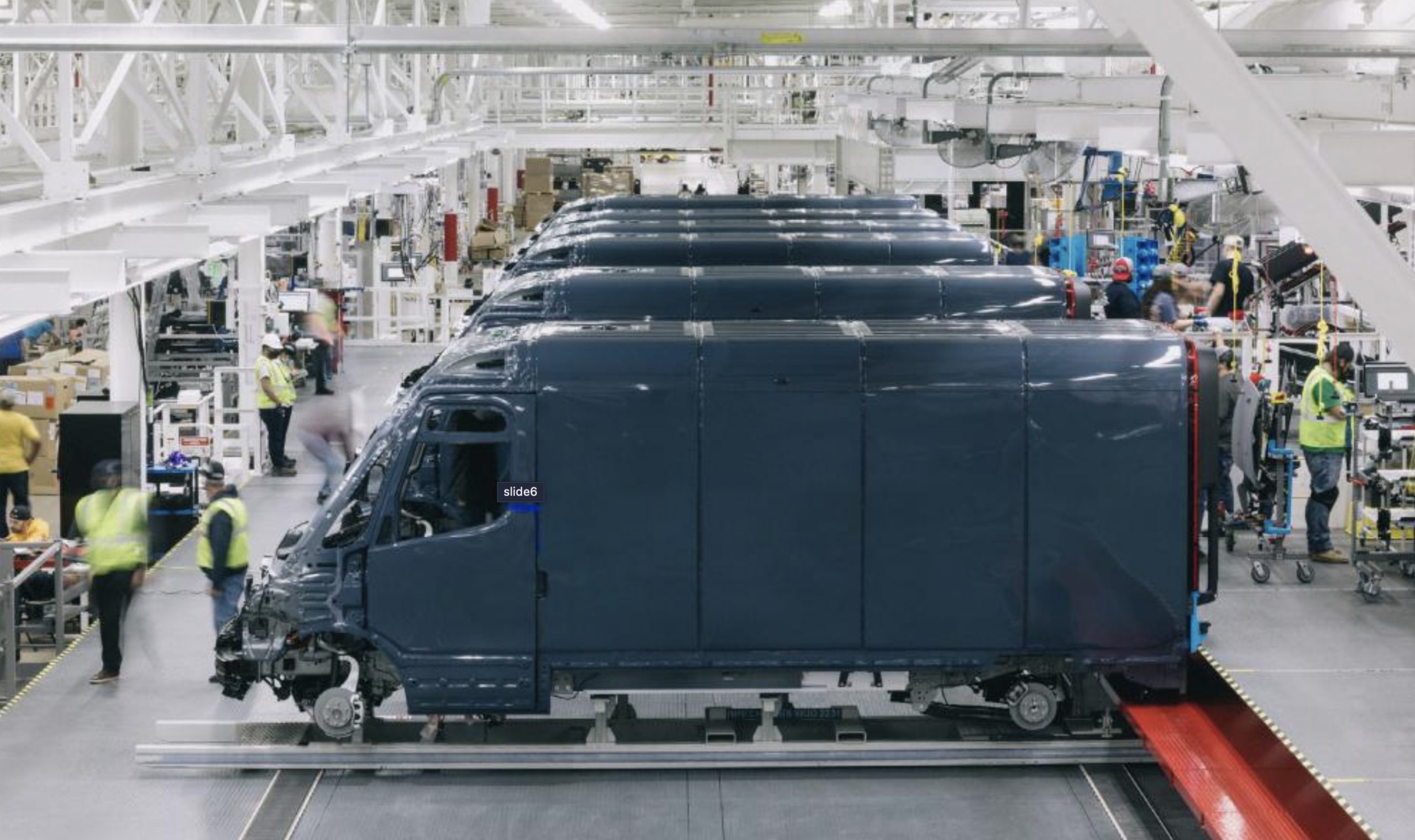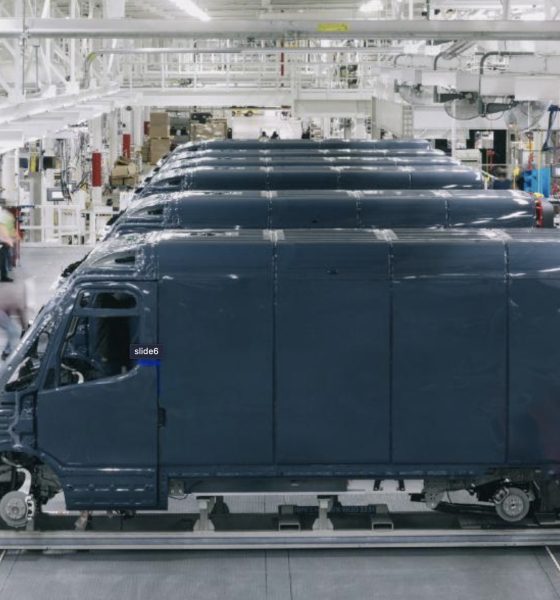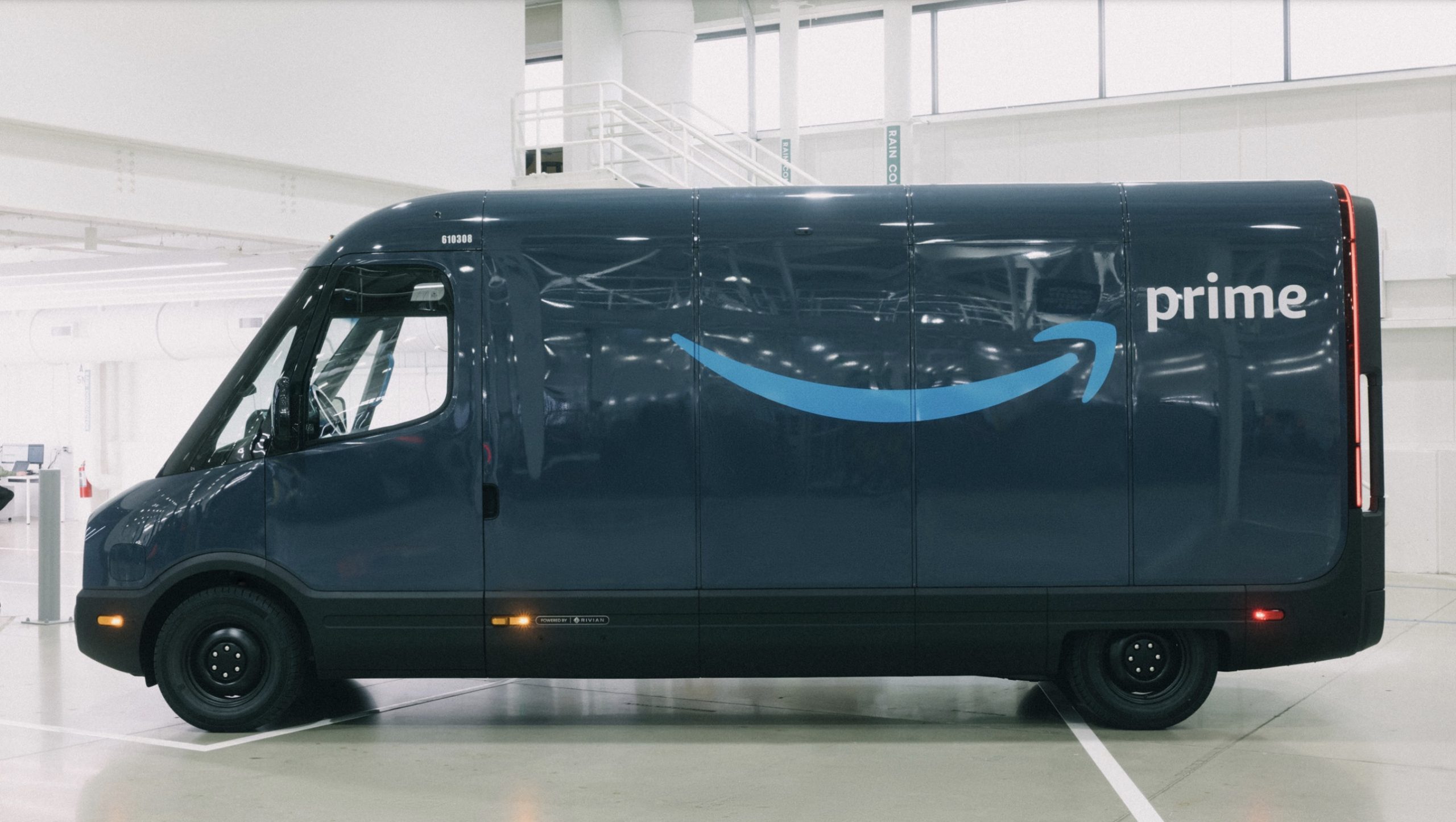

Investor's Corner
How Rivian’s deal with Mercedes bolsters the EV maker’s long-term outlook
After Rivian Automotive (NASDAQ: RIVN) struck a deal with Mercedes-Benz last week for a strategic partnership and joint production effort of electric delivery vans, analysts are explaining how the move could help bolster the EV maker’s long-term outlook.
Last week, Rivian and Mercedes-Benz announced they would build all-electric delivery vans for the European market, where the EV company has yet to deliver a vehicle. In the United States, Rivian is currently offering customers the R1T pickup, but its EDV, or Electric Delivery Van, is one of the main focal points of the company’s early production.
In 2019, Rivian found itself a worthy investor and supporter in Amazon, which ordered 100,000 EDV units from the company. Deliveries began this year after extensive pilot programs yielded adequate data for a controlled launch in several cities. The EDV is an early signal of success for Rivian as it struggles to ramp production of the R1T and R1S due to parts shortages. Supply chain issues have been cited by Rivian in the past for delayed production and delivery dates.
However, the EDV’s arrival in Europe and Rivian’s partnership with Mercedes-Benz is bolstering the company’s long-term future, which has been not in doubt but definitely questioned by those with extensive knowledge of the industry. While armchair commentators have speculated that Rivian and other EV startups would not survive the early days of production, Tesla CEO Elon Musk advised the automaker to cut costs and ramp production at its first factory before expanding with new manufacturing facilities within the United States.
The EDV partnership with Mercedes gives Rivian a new bit life, according to numerous analysts. The electric van sector, while predominately controlled by Ford, is still widely up for grabs due to relatively low volumes. While the United States may have a higher concentration of these vehicles, Europe is still lacking sustainable commercial logistics solutions, and Rivian’s EDV product is suitable for the market, Dan Ives of Wedbush explained (via MarketWatch):
“We view this as a smart strategic move by Rivian to penetrate Europe while ramping production of the EDV platform to meet its long-term growth and profitability targets. We believe Rivian is primed to capture the massive influx of current and future EV demand, capitalizing on a unique global TAM from a core engineering and design perspective along with the Amazon commercial relationship has the potential to be a major EV stalwart over the next decade. Production is improving to at least hit the 25k deliveries this year and we have confidence that customer reservations continue to increase into FY23 with the stage set for a seminal year ahead.”
Ives has a $45 price target on Rivian and an ‘Outperform’ rating on the stock.
Credit: Rivian
Additionally, Ben Kallo of Baird Securities has also said the Rivian deal will help the company solve scalability with the production portion of the deal occurring at an existing Mercedes-Benz facility in Europe. Kallo also said that Rivian has a chance to “mount a challenge to Tesla’s current dominance” in the coming years as it continues to address its total scalable market through strategic partnerships like this one:
“With few details disclosed regarding the proposed partnership, the total addressable market for electric vans is still vague. Despite a lack of clarity, RIVN is set to benefit from Mercedes’ scale while lending from its strong technology position. As the world accelerates its shift to EVs, Rivian has a solid opportunity to mount a challenge to Tesla’s current dominance.”
Kallo and Biard hold a $51 price target with an ‘Outperform’ rating on the stock. At the time of writing, shares were down just 1.6 percent on the day, but have surged over 14.5 percent since the partnership was announced last week.
Disclosure: Joey Klender is not a RIVN shareholder.
I’d love to hear from you! If you have any comments, concerns, or questions, please email me at joey@teslarati.com. You can also reach me on Twitter @KlenderJoey, or if you have news tips, you can email us at tips@teslarati.com.

Investor's Corner
Tesla stock closes at all-time high on heels of Robotaxi progress

Tesla stock (NASDAQ: TSLA) closed at an all-time high on Tuesday, jumping over 3 percent during the day and finishing at $489.88.
The price beats the previous record close, which was $479.86.
Shares have had a crazy year, dipping more than 40 percent from the start of the year. The stock then started to recover once again around late April, when its price started to climb back up from the low $200 level.
This week, Tesla started to climb toward its highest levels ever, as it was revealed on Sunday that the company was testing driverless Robotaxis in Austin. The spike in value pushed the company’s valuation to $1.63 trillion.
Tesla Robotaxi goes driverless as Musk confirms Safety Monitor removal testing
It is the seventh-most valuable company on the market currently, trailing Nvidia, Apple, Alphabet (Google), Microsoft, Amazon, and Meta.
Shares closed up $14.57 today, up over 3 percent.
The stock has gone through a lot this year, as previously mentioned. Shares tumbled in Q1 due to CEO Elon Musk’s involvement with the Department of Government Efficiency (DOGE), which pulled his attention away from his companies and left a major overhang on their valuations.
However, things started to rebound halfway through the year, and as the government started to phase out the $7,500 tax credit, demand spiked as consumers tried to take advantage of it.
Q3 deliveries were the highest in company history, and Tesla responded to the loss of the tax credit with the launch of the Model 3 and Model Y Standard.
Additionally, analysts have announced high expectations this week for the company on Wall Street as Robotaxi continues to be the focus. With autonomy within Tesla’s sights, things are moving in the direction of Robotaxi being a major catalyst for growth on the Street in the coming year.
Elon Musk
Tesla needs to come through on this one Robotaxi metric, analyst says
“We think the key focus from here will be how fast Tesla can scale driverless operations (including if Tesla’s approach to software/hardware allows it to scale significantly faster than competitors, as the company has argued), and on profitability.”

Tesla needs to come through on this one Robotaxi metric, Mark Delaney of Goldman Sachs says.
Tesla is in the process of rolling out its Robotaxi platform to areas outside of Austin and the California Bay Area. It has plans to launch in five additional cities, including Houston, Dallas, Miami, Las Vegas, and Phoenix.
However, the company’s expansion is not what the focus needs to be, according to Delaney. It’s the speed of deployment.
The analyst said:
“We think the key focus from here will be how fast Tesla can scale driverless operations (including if Tesla’s approach to software/hardware allows it to scale significantly faster than competitors, as the company has argued), and on profitability.”
Profitability will come as the Robotaxi fleet expands. Making that money will be dependent on when Tesla can initiate rides in more areas, giving more customers access to the program.
There are some additional things that the company needs to make happen ahead of the major Robotaxi expansion, one of those things is launching driverless rides in Austin, the first city in which it launched the program.
This week, Tesla started testing driverless Robotaxi rides in Austin, as two different Model Y units were spotted with no occupants, a huge step in the company’s plans for the ride-sharing platform.
Tesla Robotaxi goes driverless as Musk confirms Safety Monitor removal testing
CEO Elon Musk has been hoping to remove Safety Monitors from Robotaxis in Austin for several months, first mentioning the plan to have them out by the end of 2025 in September. He confirmed on Sunday that Tesla had officially removed vehicle occupants and started testing truly unsupervised rides.
Although Safety Monitors in Austin have been sitting in the passenger’s seat, they have still had the ability to override things in case of an emergency. After all, the ultimate goal was safety and avoiding any accidents or injuries.
Goldman Sachs reiterated its ‘Neutral’ rating and its $400 price target. Delaney said, “Tesla is making progress with its autonomous technology,” and recent developments make it evident that this is true.
Investor's Corner
Tesla gets bold Robotaxi prediction from Wall Street firm
Last week, Andrew Percoco took over Tesla analysis for Morgan Stanley from Adam Jonas, who covered the stock for years. Percoco seems to be less optimistic and bullish on Tesla shares, while still being fair and balanced in his analysis.

Tesla (NASDAQ: TSLA) received a bold Robotaxi prediction from Morgan Stanley, which anticipates a dramatic increase in the size of the company’s autonomous ride-hailing suite in the coming years.
Last week, Andrew Percoco took over Tesla analysis for Morgan Stanley from Adam Jonas, who covered the stock for years. Percoco seems to be less optimistic and bullish on Tesla shares, while still being fair and balanced in his analysis.
Percoco dug into the Robotaxi fleet and its expansion in the coming years in his latest note, released on Tuesday. The firm expects Tesla to increase the Robotaxi fleet size to 1,000 vehicles in 2026. However, that’s small-scale compared to what they expect from Tesla in a decade.
Tesla expands Robotaxi app access once again, this time on a global scale
By 2035, Morgan Stanley believes there will be one million Robotaxis on the road across multiple cities, a major jump and a considerable fleet size. We assume this means the fleet of vehicles Tesla will operate internally, and not including passenger-owned vehicles that could be added through software updates.
He also listed three specific catalysts that investors should pay attention to, as these will represent the company being on track to achieve its Robotaxi dreams:
- Opening Robotaxi to the public without a Safety Monitor. Timing is unclear, but it appears that Tesla is getting closer by the day.
- Improvement in safety metrics without the Safety Monitor. Tesla’s ability to improve its safety metrics as it scales miles driven without the Safety Monitor is imperative as it looks to scale in new states and cities in 2026.
- Cybercab start of production, targeted for April 2026. Tesla’s Cybercab is a purpose-built vehicle (no steering wheel or pedals, only two seats) that is expected to be produced through its state-of-the-art unboxed manufacturing process, offering further cost reductions and thus accelerating adoption over time.
Robotaxi stands to be one of Tesla’s most significant revenue contributors, especially as the company plans to continue expanding its ride-hailing service across the world in the coming years.
Its current deployment strategy is controlled and conservative to avoid any drastic and potentially program-ruining incidents.
So far, the program, which is active in Austin and the California Bay Area, has been widely successful.








